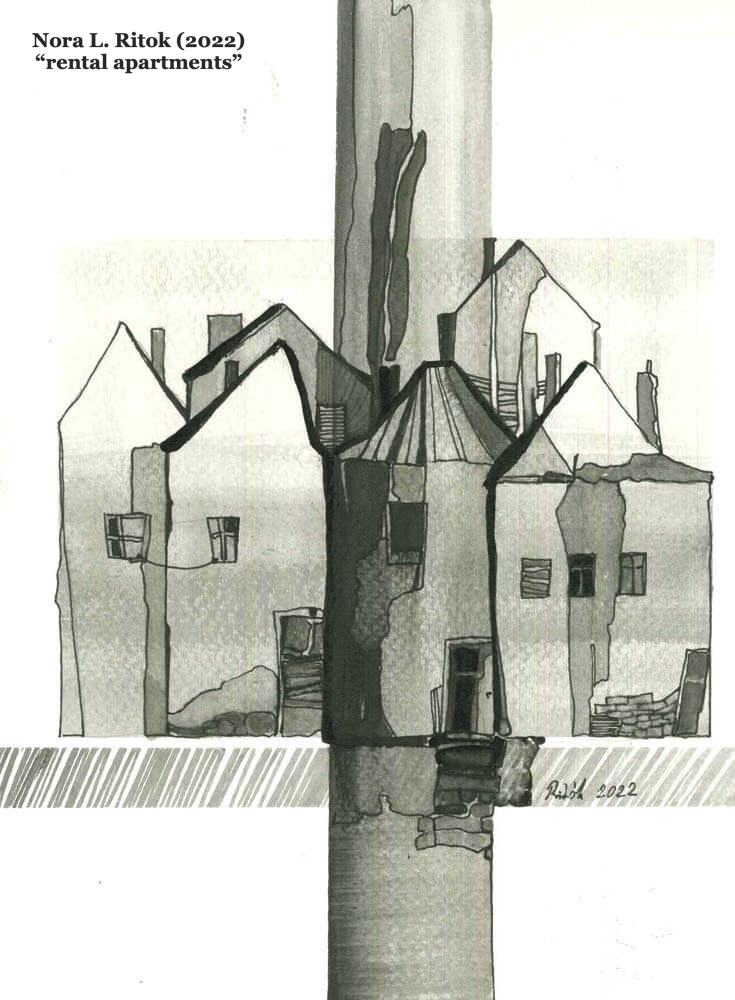Clashing Vulnerabilities
Posted on 13-02-2023
Clashing vulnerabilities
The globalization era resulted in the fragmentation of class structures, and regional and social inequalities grew. As a result, upward mobility is declining in most countries in Europe. More and more people are at risk of downward mobility, but they are classified as “not poor enough” to receive help and are pushed back of the queue for benefits, including housing.
Housing affordability is a primary driver of precarity, affecting both upward and downward mobility. A growing number of middle-income people have difficulty affording adequate housing in Europe, facing safety concerns, as they can only access unhealthy, low-quality, energy-inefficient, or overcrowded housing options. Their situation has become fragile partly because of the liberalized labor market, and partly because the system abandoned them as an outcome of the cuts in the welfare state. Meanwhile, the number of evicted and homeless people is also rising.
”Clashing vulnerabilities” between marginalized people and increasingly downwardly mobile people should be managed, even though risks are being distributed differently, and it is hard to estimate how structural and individual factors influence the probability of becoming downwardly mobile.
I had my first secondment at BMSZKI (Budapest Methodological Centre of Social Policy and its Institutions). BMSZKI is the largest homeless service provider in the capital, also it is one of the largest social service providers in the country and the Central European region. They are making a great effort to ensure the highest quality of services for vulnerable people who turn to them for help, also they developed the methodology of needs assessment for homeless people and established a special professional network to solve issues (e.g: related to housing, health care, addiction). BMSZKI differentiates the profiles of their services based on the needs of homeless people and these services are adapted to the demands that arose.
This secondment demonstrated how “social practices” as a framework can serve transdisciplinarity. There is a certain knowledge that we cannot get from books or lectures. Personal experiences of the working people at particular institutes, or organizations are essential parts of the learning process. During my stay, I learned about the theory and practice of social work, and I had the possibility to have site visits, meeting with the leaders of different programs (FET, No Slum), and homes (Temporary home for families, K22). I had the chance to have individual and multi-person consultations to shape my understanding and the direction of my research.
I benefited from the fruitful discussions about how important it is to open services both for homeless and at risk people. To open the system from the bottom and the top. On the one hand, social/housing policy should lower the number of people who are homeless (living literally on the streets), and on the other hand, it should provide people in general with more opportunities to get a safe, affordable home. A policy that focuses only on the most serious problems or restricts itself to the poorest residents is clearly not sustainable. The question remains: How to find harmony between these two interrelated goals? They are non-contradictory public purposes, but they compete with each other in terms of resources and administrative capacities. There lies the challenge.
I would like to conclude this post with a book recommendation and a quote.
Book recommendation: Tell Them Who I Am: The Lives of Homeless Women by Elliot Liebow
The author of this ethnographic research spent time with homeless women in the late eighties (after being diagnosed with cancer). Liebow tells us that these women were not homeless because they had mental health issues or addiction problems. (There are many women who are mentally or physically ill or who are having family issues or addiction problems who have homes.) They are homeless because they cannot afford a home, even when they have several jobs at the same time.
Quote about homelessness from Sharon Stone (from her speech presented at the Compass Community Services, Spring Forward 2009 luncheon, San Francisco, April 23, 2009), who is the co-founder of Planet Hope ( https://planethope.org ):
“I think so many people don’t really know what it is to be homeless, or how people get there. Many people hear the word “homeless” and they think of that guy cast in a movie who is kind of skinny and skanky and stinky and stands outside a bar begging. That’s not homelessness. That’s an idea. Homelessness is what happens when you’re one paycheck away from losing your home. When you have tried everything you’ve got. Everything. When you’ve leveraged everything, sold everything, sold your lawn furniture, sold your couch, taken your grandmother’s engagement ring to the pawn shop, given away your clothes, haven’t eaten, live on a dozen eggs for a week, fed your kids but you don’t eat, slept in your car, they’ve taken your car, you’ve lived in a pup tent, and now you don’t have that. Homelessness is when your government job is gone. Homelessness is when you’re a professor, and they don’t need you anymore at the school. Homelessness is when your dental group is cutting down and they don’t need that many dentists anymore. Homelessness is educated people. Homelessness is when you’re a wife, and your husband wants a younger one. Or a different one. And not you and those noisy kids… And when children — good children, not drug users — but good normal children just like yours are in the street, innocent, pure, lovely, beautiful children just like mine and yours are in the street for two weeks, 14 days, and they have nowhere to live, and not a mother who is a tiger, who stands over them and gets them to school and keeps her head together, or something happens to that parent — in 14 days they are prostitutes to live, because that’s the only way they can eat. And that is a governmental statistic. This is homelessness.”
Author:
A.Martin
(ESR7)



